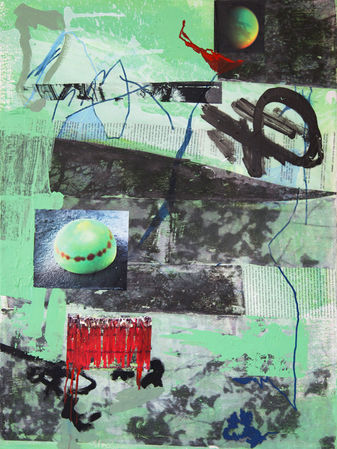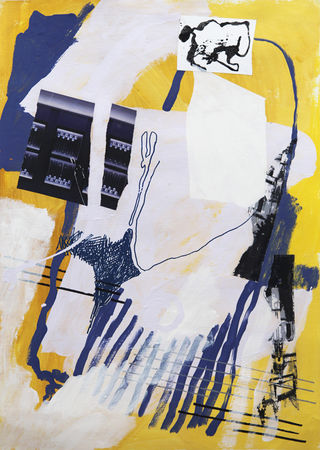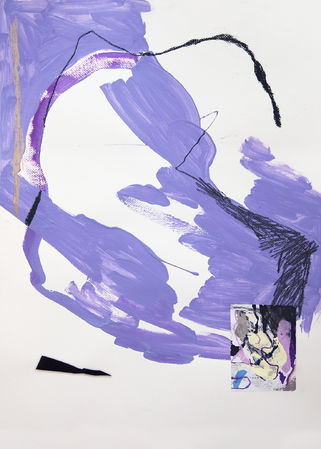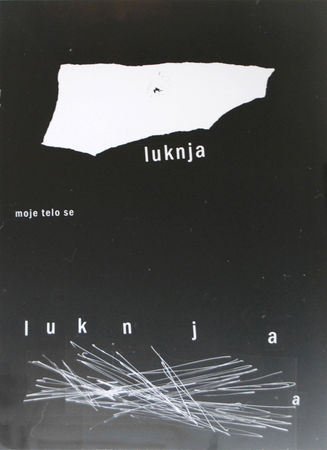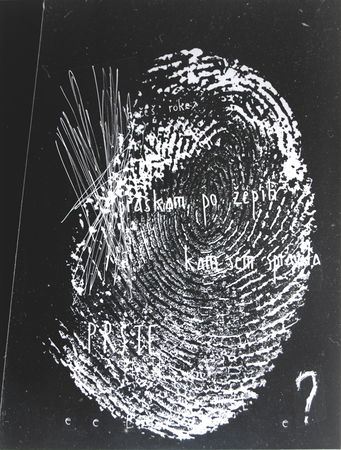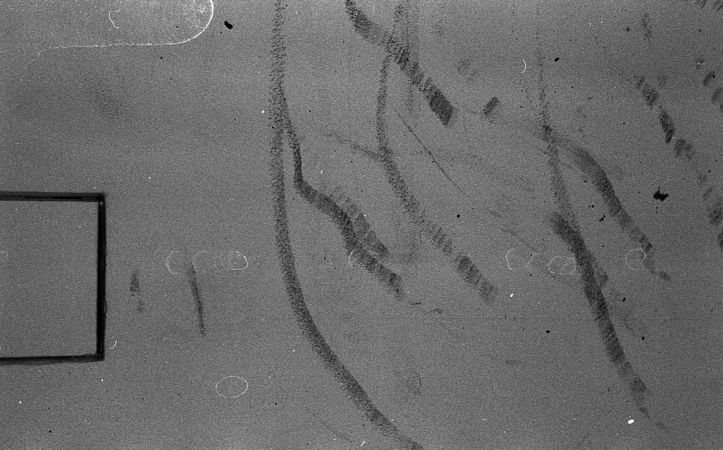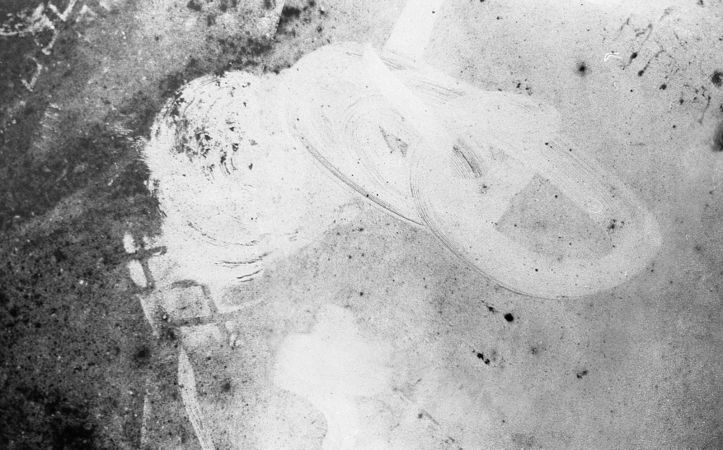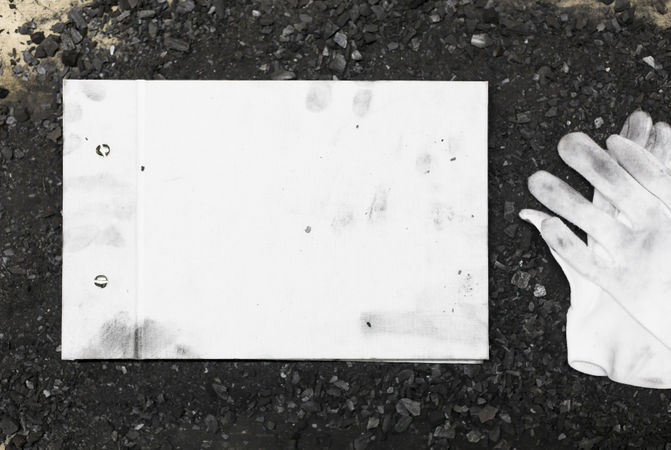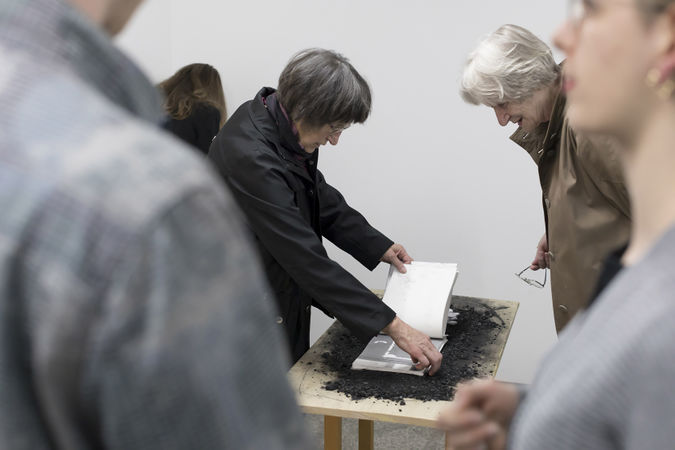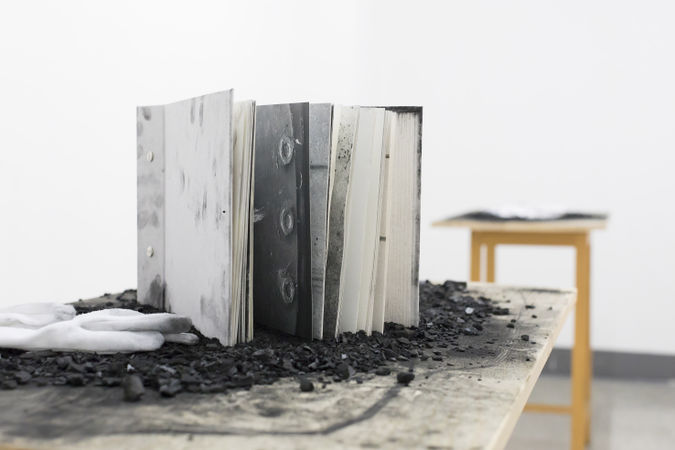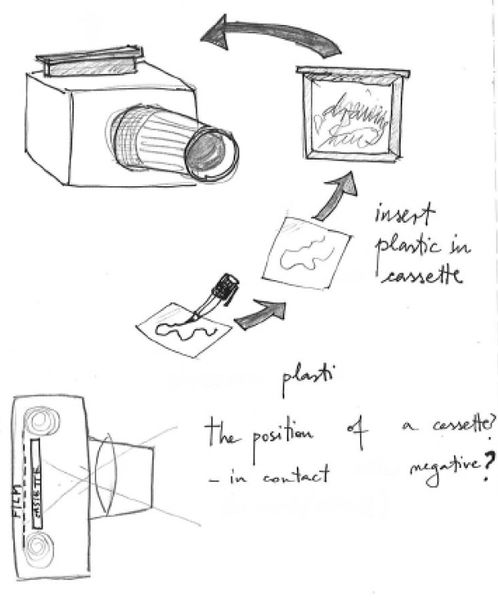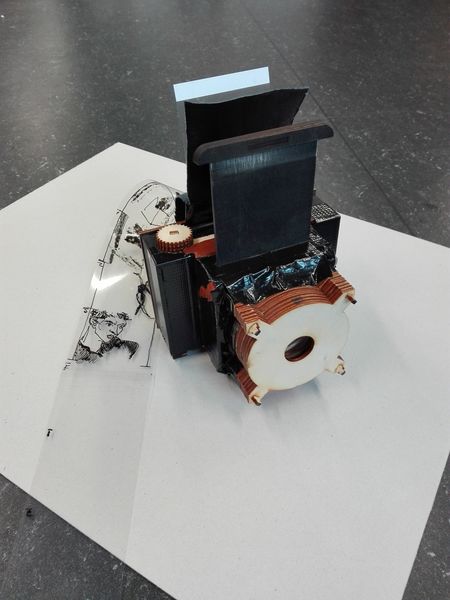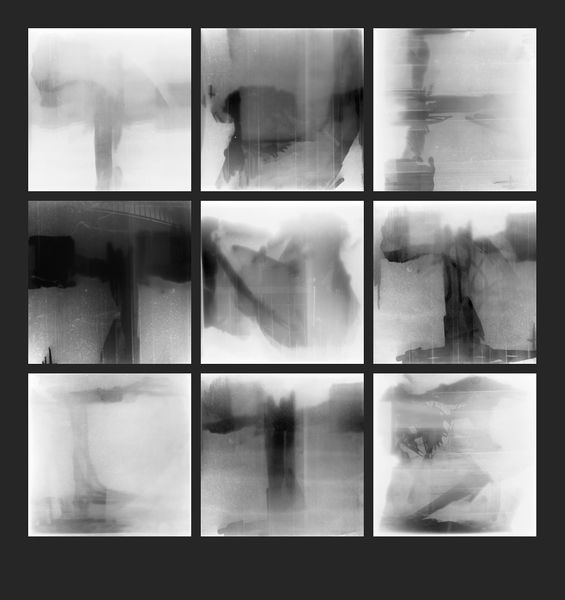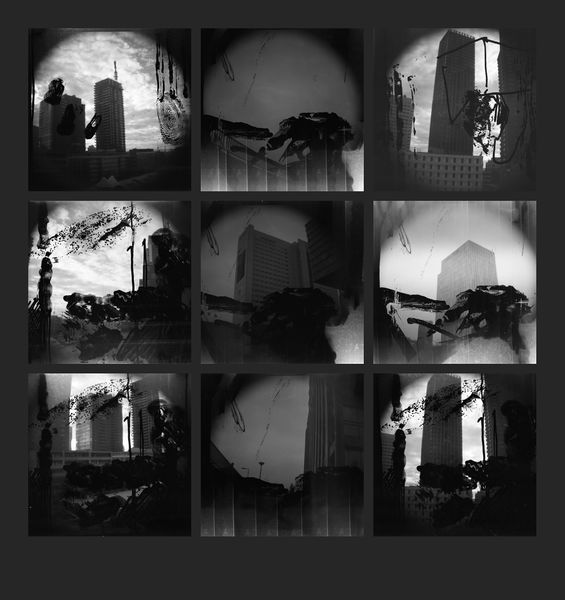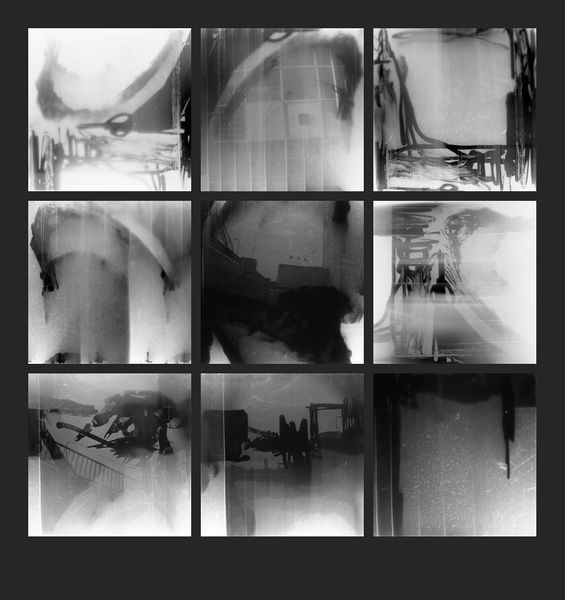Mia/Text on Method: Difference between revisions
| (40 intermediate revisions by 2 users not shown) | |||
| Line 45: | Line 45: | ||
*what was the input (my readings) | *what was the input (my readings) | ||
*how was it processed (my methods) | *how was it processed (my methods) | ||
*what are the products (my writings) | *what are the products (my writings) | ||
*how does it feed ''Trace'' and ''Drawing camera'' | *how does it feed ''Trace'' and ''Drawing camera'' | ||
| Line 59: | Line 59: | ||
READING&WRITING | READING&WRITING | ||
*what was the input (my readings) | |||
*what was the input (my readings ) | |||
*how was it processed (my methods) | *how was it processed (my methods) | ||
*what are the products (my writings) | *what are the products (my writings) | ||
| Line 129: | Line 130: | ||
=Third Draft (15.5. 2019)= | =Third Draft (15.5. 2019)= | ||
Steve's comments on the third draft: | |||
'''["images are visual nomads" = this phrase perfectly describes where you position your research. The text below is exactly what is needed for a text on method: it gives a comprehensive account of what you have been doing and clearly articulates your thinking on a practical and theoretical level. Apart from a few tiny things to take care of in the introduction (see notes below) there is little more to do. Good work.]''' | |||
=Mia Paller: Tracing My Own Way (text on method, June 2019)= | |||
==Where does it come from? (past)== | ==Where does it come from? (past)== | ||
I regard picture as a proto-screen where the layering of visual material is being projected as the confrontation with the flood of images. Before enrolling in the Lens Based course, I had been analysing how disparate elements are converging mostly through painting, collage and animation. I was interested in recycling in its material sense – I collaged the side products of painting, text fragments, abandoned sketches and notes back into the picture – literally recycling the waste I produced during the process of making. On the other hand, reusing existing material brings conceptual element along with it. Using found images from magazines, photos from the internet or reproductions of artworks I was dealing with appropriation. The latter raises questions about authorship and originality and stimulates the examination of modern communication and reproducibility of images. Combining and manipulating the visual material results in a picture within a picture, which reveals as a recurring structure in my past as well as present works. | Images are visual nomads. Our visual environment is a complex net of signs, pictures and texts whose origins are hard to track. The references are constantly intersecting one another and appearances are traveling across the world. Images are not isolated, but changeable entities that are constantly migrating – they are visual nomads. | ||
I regard picture as a proto-screen where the layering of visual material is being projected as the confrontation with the flood of images. As humans, we fail to grasp the world as is - instead, we encode it into images and project them back into the world. A picture, be it a painting, photograph or other, is therefore a prototype of a screen, which mediates images between the reality and the spectator. | |||
Before enrolling in the Lens Based course, I had been analysing how disparate elements are converging mostly through painting, collage and animation. I was interested in recycling in its material sense – I collaged the side products of painting, text fragments, abandoned sketches and notes back into the picture – literally recycling the waste I produced during the process of making. On the other hand, reusing existing material brings conceptual element along with it. Using found images from magazines, photos from the internet or reproductions of artworks I was dealing with appropriation. The latter raises questions about authorship and originality and stimulates the examination of modern communication and reproducibility of images. Combining and manipulating the visual material results in a picture within a picture, which reveals as a recurring structure in my past as well as present works. | |||
<gallery heights=300px mode="packed-hover" caption="A peek in my past works - collage and mixed media paintings from 2017/18"> | |||
File:collage_fish.jpg|Fish (2018) | |||
File:SLIKA 1.jpg|no title (2018) | |||
File:Rumenomodra 2018.jpg|no title (2018) | |||
File:ZRISBA 3.jpg|no title (2017) | |||
</gallery> | |||
==What is it now? (present)== | ==What is it now? (present)== | ||
The bridge is appearing ... in keywords | The bridge is appearing ... in keywords | ||
*Photogram, collage, mixed media works | *Photogram, collage, mixed media works | ||
*layering | *layering | ||
*Found images - found elements (running into something) | *Found images - found elements (running into something) | ||
| Line 143: | Line 157: | ||
*Gesture, mark | *Gesture, mark | ||
*Recurring questions: What is an image? Why the need to leave a mark? | *Recurring questions: What is an image? Why the need to leave a mark? | ||
<gallery heights=300px mode="packed-hover"> | |||
File:Fotogram luknja17.jpg|photogram: A Hole (2017) | |||
File:Fotogram praskam17.jpg|photogram: I am scratching my pockets (2017) | |||
</gallery> | |||
===1. Trace I and II=== | ===1. Trace I and II=== | ||
| Line 169: | Line 187: | ||
===READING&WRITING=== | ===READING&WRITING=== | ||
Since my practice broadened from drawing and painting to photographic image-making, my main subjects for theoretical research of the past few months therefore emerged from Trace and Drawing Camera. As my practice shifted, I wondered what the conceptual relation between the two mediums is. One aspect of it is the question whether photography has become considered art as for instance painting had long before. Historical overview of the conflict between the two mediums’ positions is thoroughly discussed in Susan Sontag’s On Photography (Photographic Evangels) and Martin Jay’s Photography and the Mirror of Art. I approached the texts by close reading, annotating, tracing parallels and discrepancies, making synopses and finally writing a comparative essay Photography encapsulates art itself. I touched on the statement that photography as a medium is valuable in the context of art because it subverted the very tradition it became a part of. Painting’s relation to photography is reciprocal – the two informed one another in terms of technical, aesthetic, and conceptual influences. (Jay, 1989; Sontag, 1973) Jay and Sontag emphasise photography’s inherently hybrid status and this conception was very close to my understanding of all images. | Since my practice broadened from drawing and painting to photographic image-making, my main subjects for theoretical research of the past few months therefore emerged from Trace and Drawing Camera. As my practice shifted, I wondered what the conceptual relation between the two mediums is. One aspect of it is the question whether photography has become considered art as for instance painting had long before. Historical overview of the conflict between the two mediums’ positions is thoroughly discussed in Susan Sontag’s On Photography (Photographic Evangels) and Martin Jay’s Photography and the Mirror of Art. I approached the texts by close reading, annotating, tracing parallels and discrepancies, making synopses and finally writing a comparative essay ''[[Mia/Second_synopsis_and_comparative_essay#3._Comparative_essay_-_2ND_EDIT|Photography encapsulates art itself.]]'' I touched on the statement that photography as a medium is valuable in the context of art because it subverted the very tradition it became a part of. Painting’s relation to photography is reciprocal – the two informed one another in terms of technical, aesthetic, and conceptual influences. (Jay, 1989; Sontag, 1973) Jay and Sontag emphasise photography’s inherently hybrid status and this conception was very close to my understanding of all images. | ||
Asking whether photography is art, called for a certain definition of art in the first place. This led me to analyse how understanding of medium and the notion of art shifted through time and what is the possible conception of it today. I approached the topic by close reading Rosalind Krauss’ A Voyage on the North Sea: Art in the Age of the Post-Medium Condition and Marcel Duchamp’s The creative Act. The outcome of the analysis was the second essay Being an artist now means to question the nature of | Asking whether photography is art, called for a certain definition of art in the first place. This led me to analyse how understanding of medium and the notion of art shifted through time and what is the possible conception of it today. I approached the topic by close reading Rosalind Krauss’ A Voyage on the North Sea: Art in the Age of the Post-Medium Condition and Marcel Duchamp’s The creative Act. The outcome of the analysis was the second essay ''[[Mia/Second_comparative_essay|Being an artist now means to question the nature of art...]]'' Duchamp’s approach to an understanding of art is based on so called creative act: from intention to realisation, the artist undergoes the series of efforts, satisfaction, refusals and decisions. He says that this chain has a missing link, a gap that happens between artist’s inability to fully express his intention. This vivid description of creative process resonated with my own approach to making, which means going through different stages of try and error, producing the result that is inevitably different from my intentions. Another point of revelation was his understanding of the viewer, which according to Duchamp acts as a connection between the artist, his artwork and external world. Spectator is the one who decodes the work and its possible meanings and thus contributes to the creative act. Trace is thus a very obvious illustration of the fatality of this interaction, but by reading about it, I started recognizing it in my previous works and overall began to be more aware of this artwork-spectator unity. Rosalind Krauss digs in the core of what we call medium. She illustrates with the example of film that the medium is an ‘apparatus’. Its essence cannot be reduced to merely unworked physical support - its layered, complex structure is constitutive for internal plurality of photography and thus any given medium. She also points out that there is no medium-specificity as the inside of an artwork is always invaded by its context. (Duchamp, 1961; Krauss, 1992) | ||
Further investigation of the topics introduced by these texts was done in the form of reading groups. As a class, we organised three groups based on common interests. I participated in the group starting with the book Vilem Flusser: Towards a Philosophy of Photography, concentrating on the different aspects of above-mentioned term ‘apparatus’. Drawing means an obviously subjective position, while taking photographs is a mechanical process. Thinking about this axis between subjectively produced images and seemingly objective recording of reality with a camera led me to conceptualising the mechanisms of the machine. Thus, arriving at a term ‘apparatus’, I found Flusser’s understanding of it convincing. One of his major points which I also found directly related to my practice, was the concept of a black box. The camera and the person operating it, according to Flusser form a complex which directly conditions the outcome. Moreover, the camera acts as a black box – its operator can control its input and knows how to manipulate it to produce specific output, but what exactly happens in-between, remains hidden. The actual encoding of technical images takes place in this very mechanism we cannot fully understand. Building my own camera helped me to break down primary mechanisms and better understand how any camera works. It was thus an attempt to disclose the black box. Furthermore, by customizing the model to merge drawings with photographs, I explored the difference which Flusser analyses as a distinction between technical images, i.e. a photographs, and traditional images (such as drawings and paintings). The latter are, according to him, primary abstractions, because we abstract them directly from the concrete world before us. Contrary, technical images are abstractions of third order, because they signify texts, which are abstracted from traditional images which abstract from concrete world. Flusser states that technical images are images, produced by apparatuses. However, with Drawing Camera, the apparatus make an image which is traditional and technical at the same time. Thus the outcome is inherently hybrid, blurring the reality of the physical matter and the smoothness of reality’s recording. Similar effect happened in Trace, when stains of charcoal on the pictures merged with the photographs themselves, so that it was hard to determine where the line between one and the other is. | Further investigation of the topics introduced by these texts was done in the form of reading groups. As a class, we organised three groups based on common interests. I participated in the group starting with the book ''Vilem Flusser: Towards a Philosophy of Photography'', concentrating on the different aspects of above-mentioned term ‘apparatus’. Drawing means an obviously subjective position, while taking photographs is a mechanical process. Thinking about this axis between subjectively produced images and seemingly objective recording of reality with a camera led me to conceptualising the mechanisms of the machine. Thus, arriving at a term ‘apparatus’, I found Flusser’s understanding of it convincing. One of his major points which I also found directly related to my practice, was the concept of a black box. The camera and the person operating it, according to Flusser form a complex which directly conditions the outcome. Moreover, the camera acts as a black box – its operator can control its input and knows how to manipulate it to produce specific output, but what exactly happens in-between, remains hidden. The actual encoding of technical images takes place in this very mechanism we cannot fully understand. Building my own camera helped me to break down primary mechanisms and better understand how any camera works. It was thus an attempt to disclose the black box. Furthermore, by customizing the model to merge drawings with photographs, I explored the difference which Flusser analyses as a distinction between technical images, i.e. a photographs, and traditional images (such as drawings and paintings). The latter are, according to him, primary abstractions, because we abstract them directly from the concrete world before us. Contrary, technical images are abstractions of third order, because they signify texts, which are abstracted from traditional images which abstract from concrete world. Flusser states that technical images are images, produced by apparatuses. However, with Drawing Camera, the apparatus make an image which is traditional and technical at the same time. Thus the outcome is inherently hybrid, blurring the reality of the physical matter and the smoothness of reality’s recording. Similar effect happened in Trace, when stains of charcoal on the pictures merged with the photographs themselves, so that it was hard to determine where the line between one and the other is. | ||
These were in short the questions I explored within group reading, which will result in so called annotated reader. To complement Flusser’s Towards a Philosophy of Photography, we chose several additional texts (an article AI Can’t be an Artist; Giorgio Agamben: What is an Apparatus; Hans Belting: An anthropology of Images and Nonhuman Photography). We approached them by individual close reading, taking notes, discussing the texts in a group and making a common mind | These were in short the questions I explored within group reading, which will result in so called annotated reader. To complement Flusser’s Towards a Philosophy of Photography, we chose several additional texts (an article by ''Sean Dorrance Kelly: AI Can’t be an Artist; Giorgio Agamben: What is an Apparatus; Hans Belting: An anthropology of Images - Picture, Medium, Body'' and ''Joanna Zylinska: Nonhuman Photography''). We approached them by individual close reading, taking notes, discussing the texts in a group and making a common ''[https://app.milanote.com/1H43Rb1rxp429N mind map]''. Each of us chose a topic (or chapter) of interest and built around it by connecting it to other texts, questioning and commenting on the content. At some point we translated the mind map into a linear text we finally edit together, each of us adding as he/she saw fit. The final reader will most likely take a form of a printed publication (booklet), including important fragments of text, our notes, synopses or essays. Simultaneously, the product of reading and writing sessions were also several texts on my practice and projects, i.e. descriptions of making-processes, interview, reflection on the projects etc. | ||
==Where is it going? (future)== | ==Where is it going? (future)== | ||
| Line 189: | Line 207: | ||
*organic - man made | *organic - man made | ||
I wish to address these questions not only with further development of Trace and the Drawing Camera, but also through experimentation in the darkroom (photograms, chemigrams), making moving image work from resulting images (e.g. by animating), but also taking the collage-like approach in VR which offered an interesting bodily experience of layering and drawing in space. I do not regard the images I produce by the end of the academic year as final results, but more as a pool of material I can freely work with - reuse, recontextualise and | I wish to address these questions not only with further development of Trace and the Drawing Camera, but also through experimentation in the darkroom (photograms, chemigrams), making moving image work from resulting images (e.g. by animating), but also taking the collage-like approach in VR which offered an interesting bodily experience of layering and drawing in space. I do not regard the images I produce by the end of the academic year as final results, but more as a pool of material I can freely work with - reuse, recontextualise and transform. As I said, images are wanderers of the visual. | ||
==References:== | ==References:== | ||
1. Sontag, S (2005) On Photography, New York RosettaBooks LLC (electronic edition); first edition published in 1973 | 1. Agamben, G (2009) What is an Apparatus? and Other Essays, Stanford University Press | ||
2. Belting, H (2011) An anthropology of Images: Picture, Medium, Body, Princeton University Press; first edition published in 2001 | |||
3. Duchamp, M (1961) The Creative Act, Lecture at the Museum of Modern Art, New York | |||
4. Flusser, V (1983) Towards a Philosophy of Photography, London Reaktion Books | |||
5. Jay, M (1989) ‘Photography and the Mirror of Art’ in Salmagundi No. 84, (pp. 14-23) | |||
6. Kelly, S D (2019) A philosopher argues that an AI can’t be an artist, [https://www.technologyreview.com/s/612913/a-philosopher-argues-that-an-ai-can-never-be-an-artist/ MIT Technology review] | |||
7. Krauss, R (1992) The Voyage on the North Sea: Art in the Age of the Post-Medium Condition, New York Thames and Hudson Inc. | |||
8. Sontag, S (2005) On Photography, New York RosettaBooks LLC (electronic edition); first edition published in 1973 | |||
9. Zylinska, J (2017) Nonhuman Photography, Cambride The MIT Press | |||
=[[Mia/_Mia_Paller:_Tracing_My_Own_Way_(June_2019)#Where_does_it_come_from.3F_.28past.29|Text on Method (final version, June 2019)]]= | |||
Latest revision as of 10:49, 13 June 2019
Notes
Calendar page of Methods (10.4. 2019)
WHAT IS A METHOD? method as a habit, how you do things, how you approach way of working methodology is an analysis of that about how I am working and what am I working on
what methods did you use and how did they work for you? what kind of researcher are you, what suits you how did you do it? your methods + content material practice of research decisions (a la mistakes) (which result in) change in direction recognition of a core research strand (recognition of what is important to your research) affordance (more than just the function) how the new skills you acquire tie in other skills and what such skills afford
what to use for the text on methods?
- wiki pages of projects
- tutorial logs
- essays
- interview
what - content
how - methods (techniques etc.)
why - decisions, choices
First draft
Where does it come from? (past)
- photograms, collages, mixed media paintings
What is it now? (present)
1. Trace
- what: photobook, blank pages, tactile,
- how: finding, chance principle, marginal fragments in public space... obstacles&decisions in the making - change of direction (david's tutorial!)
- why: to relate photography to my previous practice, to open up my ways of thinking, working, looking
READING&WRITING
- what was the input (my readings)
- how was it processed (my methods)
- what are the products (my writings)
- how does it feed Trace and Drawing camera
2. Drawing Camera
- what: a) camera b) photographs produced by it
- how: creating a wooden camera (customising the template), experimentation with materials (plastic foil, drawing tools)
- why: to break down the complexity of the camera, to make a tool that is not commercially produced and is in this sense unique, to merge 2 principles of working(photographic and drawing methods)
3. TVACUUM
- what: 2D animation
- how:
- why: to learn about digital tools for animation
READING&WRITING
- what was the input (my readings )
- how was it processed (my methods)
- what are the products (my writings)
- how does it feed TVACUUM
Where is it going? (future)
MAKING: photograms, collage
READING&WRITING - What is: image; drawing; sign; animation
It is not alone. (context)
Second Draft
[Steve's brief feedback on your 2nd draft: I think this is a sound way to proceed: by describing each work and allowing discussion to develop from there. I appreciate the notes you take on the process (above), stick to those points and you should make a good text on method. We can discuss your latest draft at the next session.]
Where does it come from? (past)
Our visual environment is a complex net of signs, pictures and texts whose origins are hard to track. The references are constantly intersecting one another and appearances are traveling across the world. Images are not isolated, but changeable entities that are constantly migrating – they are visual nomads.
I regard picture as a proto-screen where the layering of visual material is being projected as the confrontation with the flood of images. Before enrolling in the Lens B-ased course, I had been analysing how disparate elements are converging mostly through painting, collage and animation. I was interested in recycling in its material sense – I collaged the side products of painting, text fragments, abandoned sketches and notes back into the picture – literally recycling the waste I produced during the process of making. On the other hand, reusing existing material brings conceptual element along with it. Using found images from magazines, photos from the internet or reproductions of artworks I was dealing with appropriation. The latter raises questions about authorship and originality and stimulates the examination of modern communication and reproducibility of images. Combining and manipulating the visual material results in a picture within a picture, which reveals as a recurring structure in my past as well as present works.
What is it now? (present)
The bridge is appearing ... in keywords
- Photogram, collage, mixed media pictures
- layering
- Found images - found elements (running into something)
- Coincidence
- Gesture, mark
- Recurring questions: What is an image? Why the need to leave a mark?
1. Trace I and II
are two A4 books with white hard cover and simple screw binding. When opened, one can notice that papers vary from watercolour, sketching, toned paper to canvas and semi-transparent pages. Many of them are blank, forming the breathing space between full-page images that the viewer runs into while leafing through the book. Trace displays as a photobook, showing a photographic series of marks and traces which resemble details from paintings and drawings – brushstrokes, drips, stains and blots. Photographs disclose a typology of painterly marks in public space, where they are often overlooked as mere proofs of use and ravages of time. The word Trace has multiple meanings: firstly, it means to copy a pattern through a piece of transparent paper or to draw a shape by showing its outlines. Secondly, it means to find something that was lost at the same time indicating a mark or sign that something has happened or existed. The latter is embedded in the photographs and the method of taking them, while the first is embodied in the work’s interaction with the viewer. Chance principle was the crucial way of working here and is closely related to my painting practice. I transformed myself into a hairsplitting observer, looking through the analog camera on a hunt for marginal marks of use. Instead of actively leaving traces as a painter, I became alert to be able to run into interesting, painterly fragments. I wished to make a photobook which would at the same time be a sketchbook, allowing the viewer to add his own marks, drawings and notes in it. However, the object itself turned out to be perceived as precious and vulnerable, and definitely did not lead to viewer’s intervention. But one of the teachers suggested that the means of presentation might induce similar effect. Therefore, I decided to keep the form as is (instead of thinking about alternative, more sketchbook-like binding), and concentrate on the ways of presenting the work. The books were exhibited in a small gallery space in Ljubljana. Two small tables were covered with charcoal powder, each Trace lying on one next to white cotton gloves. Clean white covers were stained immediately, and anyone who wanted to leaf through the book, inevitably left marks. Work's content generates on its own, namely in a performative way. The book as an object at the beginning of the presentation is opera aperta which changes through time of being on display. On this wise, it testifies to circumstances of its existence in particular space and time. In essence, the books explore mark making, a fundamental phenomenon, evolved to the extremes - man developed painting, writing, signs and other complex levels of expression. The decision to make an interactive work made me think more about what happens with an artwork when it reaches the audience and is somehow out of my hands. I became more aware of the importance of this viewer-artwork relation and I recognize a hint of it in my previous works, for instance in Tangram. --> reading writing Duchamp Creative act to relate photography to my previous practice, to open up my ways of thinking, working, looking
READING&WRITING
- what was the input (Susan Sontag, Martin Jay; Marcel Duchamp, Rosalind Krauss)
- how was it processed (notes, close reading, synopses)
- what are the products (my writings - essays)
- how does it feed Trace and Drawing camera
2. Drawing Camera (Risbaparat)
is a handcrafted medium format camera, made of plywood. On one side, the project includes planning and making of the camera - a tool to produce images - and on the other, it encompasses the images as its outcome. With the hand-made photo camera I explore the relation between drawing and photography and seeming difference between objectivity and subjectivity of the image. The process began with planning and customising the template for a hand-made camera. This step included experimentation with different materials: additions of tape, leather and rubber pieces to make the camera lightproof and testing the types of plastic and drawing tools to see which produce most interesting effects. After constructing the tool, it is time to use it. Right at the spot where I want to photograph, I draw a composition onto a plastic foil, using black markers, then I slide it in the camera and take a picture. Thus, we get a negative which combines a scene from my surroundings with a drawing made at that very place. Works made with this camera are actually photographs that merge with drawings directly in the process of exposing the film. It is a collage that happens in the machine itself. Creative process of making is therefore intertwined with the chance principle. Also in my painting practice, I often approach a blank picture plane by embracing the coincidence, for instance by spilling the paint, dropping collage elements on the composition etc. While working with Drawing Camera, accidental elements surprised me again and soon I found myself drawing, scratching and stamping on the plastic, treating it similarly as I do the canvas. Thus, coincidence is exactly the point where my methods from painting infiltrate my approach to photography. The question arises, why I would like to make my own camera in the first place, since the market offers such a wide range of attractive equipment. Firstly, I wished to break down the complexity of such a machine to better understand its operations. Secondly, hand-making enabled me to build specific characteristics which produce unique effects of the images I could never achieve with serially manufactured tools. DIY approach is also a response to extremely fast development of photographic technology, which actually reveals as problematic. Photographic cameras are becoming exceedingly complicated and thus non-transparent tools. Users can fully understand only their productive aspects, while the structure remains covert. In contrast to that, the structure of Drawing camera is streamlined, keeping its operation clear and explicable. But we should not disregard the fact that any camera, before all else, produces images in a specific, selective way. Thus the ultimate image can never be an objective registration of reality.
3. TVACUUM
- what: 2D animation
- how:
- why: to learn about digital tools for animation
READING&WRITING
- what was the input (my readings)
- how was it processed (my methods)
- what are the products (my writings)
- how does it feed TVACUUM
Where is it going? (future)
MAKING: photograms, collage
READING&WRITING - What is: image; drawing; sign; animation
It is not alone. (context)
Third Draft (15.5. 2019)
Steve's comments on the third draft: ["images are visual nomads" = this phrase perfectly describes where you position your research. The text below is exactly what is needed for a text on method: it gives a comprehensive account of what you have been doing and clearly articulates your thinking on a practical and theoretical level. Apart from a few tiny things to take care of in the introduction (see notes below) there is little more to do. Good work.]
Mia Paller: Tracing My Own Way (text on method, June 2019)
Where does it come from? (past)
Images are visual nomads. Our visual environment is a complex net of signs, pictures and texts whose origins are hard to track. The references are constantly intersecting one another and appearances are traveling across the world. Images are not isolated, but changeable entities that are constantly migrating – they are visual nomads.
I regard picture as a proto-screen where the layering of visual material is being projected as the confrontation with the flood of images. As humans, we fail to grasp the world as is - instead, we encode it into images and project them back into the world. A picture, be it a painting, photograph or other, is therefore a prototype of a screen, which mediates images between the reality and the spectator.
Before enrolling in the Lens Based course, I had been analysing how disparate elements are converging mostly through painting, collage and animation. I was interested in recycling in its material sense – I collaged the side products of painting, text fragments, abandoned sketches and notes back into the picture – literally recycling the waste I produced during the process of making. On the other hand, reusing existing material brings conceptual element along with it. Using found images from magazines, photos from the internet or reproductions of artworks I was dealing with appropriation. The latter raises questions about authorship and originality and stimulates the examination of modern communication and reproducibility of images. Combining and manipulating the visual material results in a picture within a picture, which reveals as a recurring structure in my past as well as present works.
- A peek in my past works - collage and mixed media paintings from 2017/18
What is it now? (present)
The bridge is appearing ... in keywords
- Photogram, collage, mixed media works
- layering
- Found images - found elements (running into something)
- Coincidence
- Gesture, mark
- Recurring questions: What is an image? Why the need to leave a mark?
1. Trace I and II
are two A4 books with white hard cover and simple screw binding. When opened, one can notice that papers vary from watercolour, sketching, toned paper to canvas and semi-transparent pages. Many of them are blank, forming the breathing space between full-page images that the viewer runs into while leafing through the book. Trace displays as a photobook, showing a photographic series of marks and traces which resemble details from paintings and drawings – brushstrokes, drips, stains and blots. Photographs disclose a typology of painterly marks in public space, where they are often overlooked as mere proofs of use and ravages of time. The word Trace has multiple meanings: firstly, it means to copy a pattern through a piece of transparent paper or to draw a shape by showing its outlines. Secondly, it means to find something that was lost at the same time indicating a mark or sign that something has happened or existed. The latter is embedded in the photographs and the method of taking them, while the first is embodied in the work’s interaction with the viewer. Chance principle was the crucial way of working here and is closely related to my painting practice. I transformed myself into a hairsplitting observer, looking through the analog camera on a hunt for marginal marks of use. Instead of actively leaving traces as a painter, I became alert to be able to run into interesting, painterly fragments. I wished to make a photobook which would at the same time be a sketchbook, allowing the viewer to add his own marks, drawings and notes in it. However, the object itself turned out to be perceived as precious and vulnerable, and definitely did not lead to viewer’s intervention. But one of the teachers suggested that the means of presentation might induce similar effect. Therefore, I decided to keep the form as is (instead of thinking about alternative, more sketchbook-like binding), and concentrate on the ways of presenting the work. The books were exhibited in a small gallery space in Ljubljana. Two small tables were covered with charcoal powder, each Trace lying on one, with white cotton gloves on the side. Clean white covers were stained immediately, and anyone who wanted to leaf through the book, inevitably left marks. Work's content generates on its own, namely in a performative way. The book as an object at the beginning of the presentation is opera aperta which changes through time of being on display. On this wise, it testifies to circumstances of its existence in particular space and time. In essence, the books explore mark making, a fundamental phenomenon, evolved to the extremes - man developed painting, writing, signs and other complex levels of expression. The decision to make an interactive work made me think more about what happens with an artwork when it reaches the audience and is somehow out of my hands. I became more aware of the importance of this viewer-artwork relation and I recognize a hint of it in my previous works, for instance in Tangram.
- Trace I and II - photographs and documentation of exhibition in DobraVaga (Ljubljana, 3.5.2019)
2. Drawing Camera (Risbaparat)
is a handcrafted medium format camera, made of plywood. On one side, the project includes planning and making of the camera - a tool to produce images - and on the other, it encompasses the images as its outcome. With the hand-made photo camera I explore the relation between drawing and photography and seeming difference between objectivity and subjectivity of the image. The process began with planning and customising the template for a hand-made camera. This step included experimentation with different materials: additions of tape, leather and rubber pieces to make the camera lightproof and testing the types of plastic and drawing tools to see which produce most interesting effects. After constructing the tool, it is time to use it. Right at the spot where I want to photograph, I draw a composition onto a plastic foil, using black markers, then I slide it in the camera and take a picture. Thus, we get a negative which combines a scene from my surroundings with a drawing made at that very place. Works made with this camera are actually photographs that merge with drawings directly in the process of exposing the film. It is a collage that happens in the machine itself. Creative process of making is therefore intertwined with the chance principle. Also in my painting practice, I often approach a blank picture plane by embracing the coincidence, for instance by spilling the paint, dropping collage elements on the composition etc. While working with Drawing Camera, accidental elements surprised me again and soon I found myself drawing, scratching and stamping on the plastic, treating it similarly as I do the canvas. Thus, coincidence is exactly the point where my methods from painting infiltrate my approach to photography. The question arises, why I would like to make my own camera in the first place, since the market offers such a wide range of attractive equipment. Firstly, I wished to break down the complexity of such a machine to better understand its operations. Secondly, hand-making enabled me to build specific characteristics which produce unique effects of the images I could never achieve with serially manufactured tools. DIY approach is also a response to extremely fast development of photographic technology, which actually reveals as problematic. Photographic cameras are becoming exceedingly complicated and thus non-transparent tools. Users can fully understand only their productive aspects, while the structure remains covert. In contrast to that, the structure of Drawing camera is streamlined, keeping its operation clear and explicable. But we should not disregard the fact that any camera, before all else, produces images in a specific, selective way. Thus the ultimate image can never be an objective registration of reality.
READING&WRITING
Since my practice broadened from drawing and painting to photographic image-making, my main subjects for theoretical research of the past few months therefore emerged from Trace and Drawing Camera. As my practice shifted, I wondered what the conceptual relation between the two mediums is. One aspect of it is the question whether photography has become considered art as for instance painting had long before. Historical overview of the conflict between the two mediums’ positions is thoroughly discussed in Susan Sontag’s On Photography (Photographic Evangels) and Martin Jay’s Photography and the Mirror of Art. I approached the texts by close reading, annotating, tracing parallels and discrepancies, making synopses and finally writing a comparative essay Photography encapsulates art itself. I touched on the statement that photography as a medium is valuable in the context of art because it subverted the very tradition it became a part of. Painting’s relation to photography is reciprocal – the two informed one another in terms of technical, aesthetic, and conceptual influences. (Jay, 1989; Sontag, 1973) Jay and Sontag emphasise photography’s inherently hybrid status and this conception was very close to my understanding of all images.
Asking whether photography is art, called for a certain definition of art in the first place. This led me to analyse how understanding of medium and the notion of art shifted through time and what is the possible conception of it today. I approached the topic by close reading Rosalind Krauss’ A Voyage on the North Sea: Art in the Age of the Post-Medium Condition and Marcel Duchamp’s The creative Act. The outcome of the analysis was the second essay Being an artist now means to question the nature of art... Duchamp’s approach to an understanding of art is based on so called creative act: from intention to realisation, the artist undergoes the series of efforts, satisfaction, refusals and decisions. He says that this chain has a missing link, a gap that happens between artist’s inability to fully express his intention. This vivid description of creative process resonated with my own approach to making, which means going through different stages of try and error, producing the result that is inevitably different from my intentions. Another point of revelation was his understanding of the viewer, which according to Duchamp acts as a connection between the artist, his artwork and external world. Spectator is the one who decodes the work and its possible meanings and thus contributes to the creative act. Trace is thus a very obvious illustration of the fatality of this interaction, but by reading about it, I started recognizing it in my previous works and overall began to be more aware of this artwork-spectator unity. Rosalind Krauss digs in the core of what we call medium. She illustrates with the example of film that the medium is an ‘apparatus’. Its essence cannot be reduced to merely unworked physical support - its layered, complex structure is constitutive for internal plurality of photography and thus any given medium. She also points out that there is no medium-specificity as the inside of an artwork is always invaded by its context. (Duchamp, 1961; Krauss, 1992)
Further investigation of the topics introduced by these texts was done in the form of reading groups. As a class, we organised three groups based on common interests. I participated in the group starting with the book Vilem Flusser: Towards a Philosophy of Photography, concentrating on the different aspects of above-mentioned term ‘apparatus’. Drawing means an obviously subjective position, while taking photographs is a mechanical process. Thinking about this axis between subjectively produced images and seemingly objective recording of reality with a camera led me to conceptualising the mechanisms of the machine. Thus, arriving at a term ‘apparatus’, I found Flusser’s understanding of it convincing. One of his major points which I also found directly related to my practice, was the concept of a black box. The camera and the person operating it, according to Flusser form a complex which directly conditions the outcome. Moreover, the camera acts as a black box – its operator can control its input and knows how to manipulate it to produce specific output, but what exactly happens in-between, remains hidden. The actual encoding of technical images takes place in this very mechanism we cannot fully understand. Building my own camera helped me to break down primary mechanisms and better understand how any camera works. It was thus an attempt to disclose the black box. Furthermore, by customizing the model to merge drawings with photographs, I explored the difference which Flusser analyses as a distinction between technical images, i.e. a photographs, and traditional images (such as drawings and paintings). The latter are, according to him, primary abstractions, because we abstract them directly from the concrete world before us. Contrary, technical images are abstractions of third order, because they signify texts, which are abstracted from traditional images which abstract from concrete world. Flusser states that technical images are images, produced by apparatuses. However, with Drawing Camera, the apparatus make an image which is traditional and technical at the same time. Thus the outcome is inherently hybrid, blurring the reality of the physical matter and the smoothness of reality’s recording. Similar effect happened in Trace, when stains of charcoal on the pictures merged with the photographs themselves, so that it was hard to determine where the line between one and the other is.
These were in short the questions I explored within group reading, which will result in so called annotated reader. To complement Flusser’s Towards a Philosophy of Photography, we chose several additional texts (an article by Sean Dorrance Kelly: AI Can’t be an Artist; Giorgio Agamben: What is an Apparatus; Hans Belting: An anthropology of Images - Picture, Medium, Body and Joanna Zylinska: Nonhuman Photography). We approached them by individual close reading, taking notes, discussing the texts in a group and making a common mind map. Each of us chose a topic (or chapter) of interest and built around it by connecting it to other texts, questioning and commenting on the content. At some point we translated the mind map into a linear text we finally edit together, each of us adding as he/she saw fit. The final reader will most likely take a form of a printed publication (booklet), including important fragments of text, our notes, synopses or essays. Simultaneously, the product of reading and writing sessions were also several texts on my practice and projects, i.e. descriptions of making-processes, interview, reflection on the projects etc.
Where is it going? (future)
At this point I can sense a certain trajectory of my work. In the following months I wish to first produce more pictures with the Drawing Camera and thoroughly understand how to use it as a tool. Since it has no viewfinder nor the lightmeter, the learning process is essentially empirical and does not allow many shortcuts. Through taking more pictures, I try to find the subject which brings those questions of two different modes of representation (drawing and photography) to the surface. I will keep asking myself which subject best shows this clash but at the same time try to find answers by producing more. I find that Trace can be a parallel practice since the two are conceptually related and inform each other. Thus, I can see myself mapping my environment and perhaps produce some more books (in the long run) as well as experiment with their formal characteristics.
In terms of theory, I see the continuation of my research feeding from the following key concepts to open up my ways of thinking, working and seeing:
- image
- index (stain, print, trace)
- drawing
- surface-depth
- layering
- sign
- organic - man made
I wish to address these questions not only with further development of Trace and the Drawing Camera, but also through experimentation in the darkroom (photograms, chemigrams), making moving image work from resulting images (e.g. by animating), but also taking the collage-like approach in VR which offered an interesting bodily experience of layering and drawing in space. I do not regard the images I produce by the end of the academic year as final results, but more as a pool of material I can freely work with - reuse, recontextualise and transform. As I said, images are wanderers of the visual.
References:
1. Agamben, G (2009) What is an Apparatus? and Other Essays, Stanford University Press
2. Belting, H (2011) An anthropology of Images: Picture, Medium, Body, Princeton University Press; first edition published in 2001
3. Duchamp, M (1961) The Creative Act, Lecture at the Museum of Modern Art, New York
4. Flusser, V (1983) Towards a Philosophy of Photography, London Reaktion Books
5. Jay, M (1989) ‘Photography and the Mirror of Art’ in Salmagundi No. 84, (pp. 14-23)
6. Kelly, S D (2019) A philosopher argues that an AI can’t be an artist, MIT Technology review
7. Krauss, R (1992) The Voyage on the North Sea: Art in the Age of the Post-Medium Condition, New York Thames and Hudson Inc.
8. Sontag, S (2005) On Photography, New York RosettaBooks LLC (electronic edition); first edition published in 1973
9. Zylinska, J (2017) Nonhuman Photography, Cambride The MIT Press


